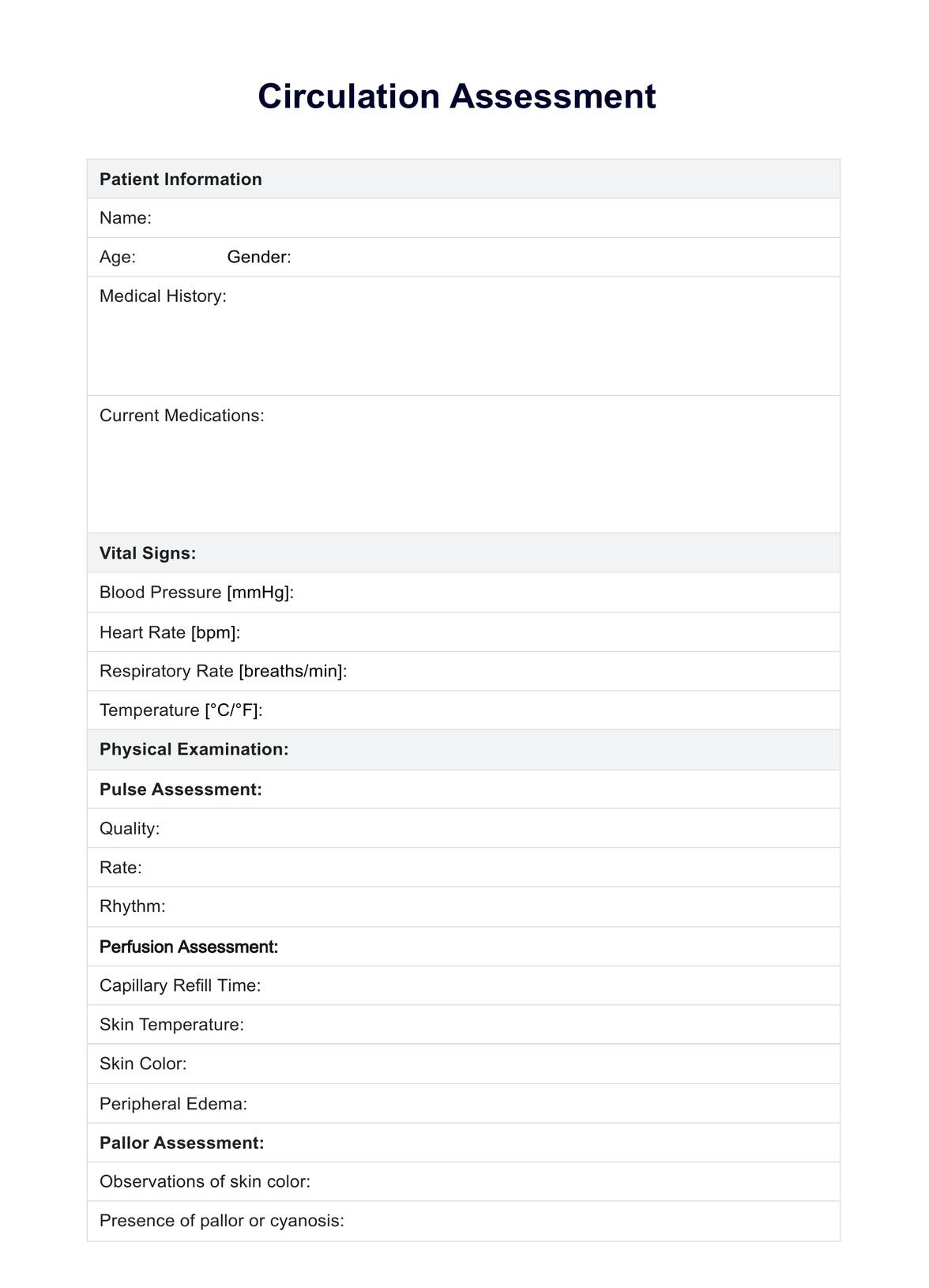Common cardiac risk factors include hypertension, diabetes, high cholesterol levels, smoking, obesity, sedentary lifestyle, family history of heart disease, and age.

Circulation Assessment
Learn about the circulatory system, its significance, and how to conduct a comprehensive Circulation Assessment using our free template example.
Circulation Assessment Template
Commonly asked questions
Hypertension can affect circulation by causing the heart to work harder to pump blood throughout the body. This increased blood pressure also can damage blood vessels, narrowing and reducing blood flow to organs and tissues.
Signs and symptoms of PAD include leg pain or cramping during activity (claudication), numbness or weakness in the legs, coldness in the lower leg or foot, sores or ulcers on the legs or feet that won't heal, and changes in the color or texture of the skin on the legs or feet.
EHR and practice management software
Get started for free
*No credit card required
Free
$0/usd
Unlimited clients
Telehealth
1GB of storage
Client portal text
Automated billing and online payments











